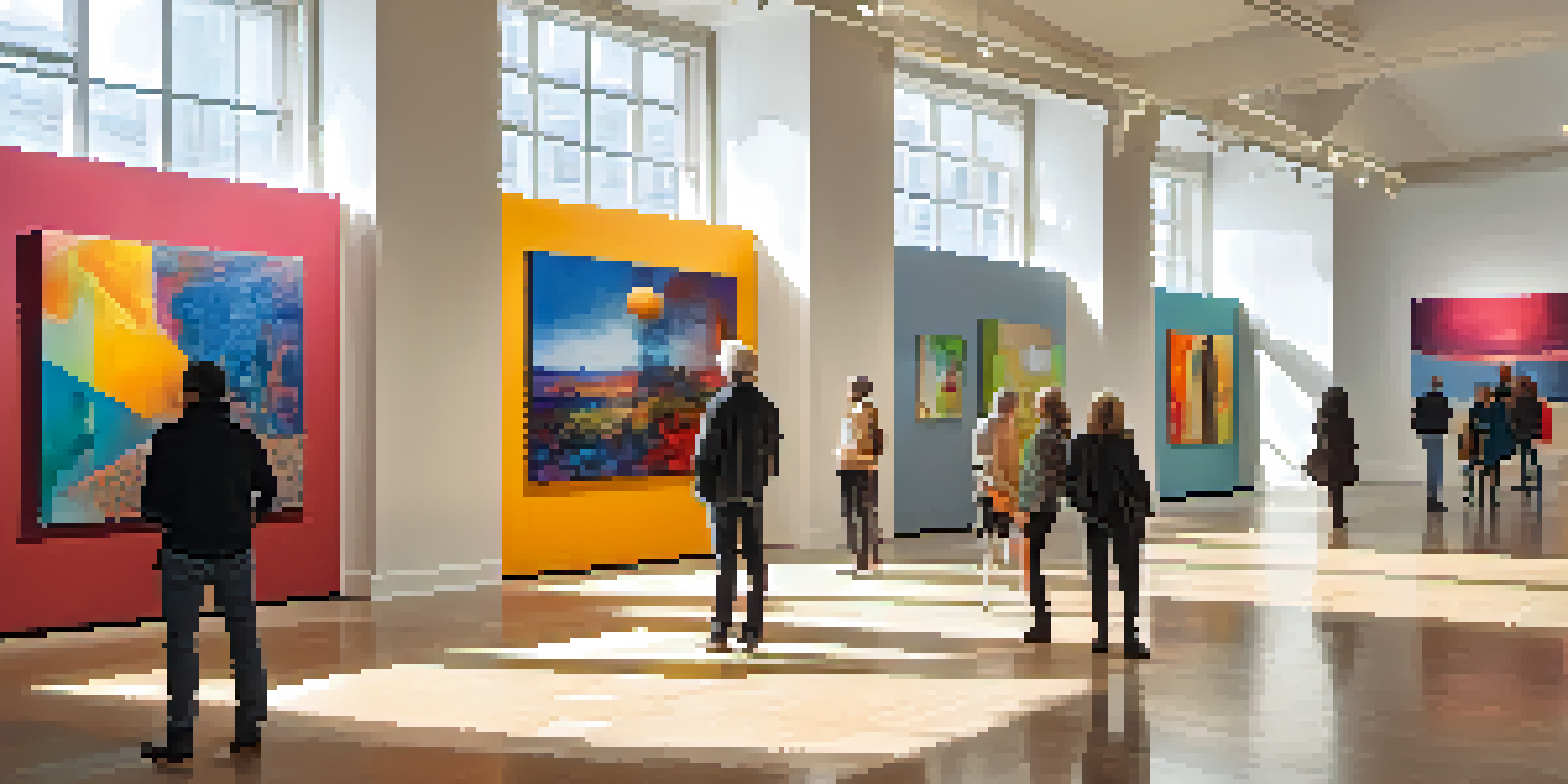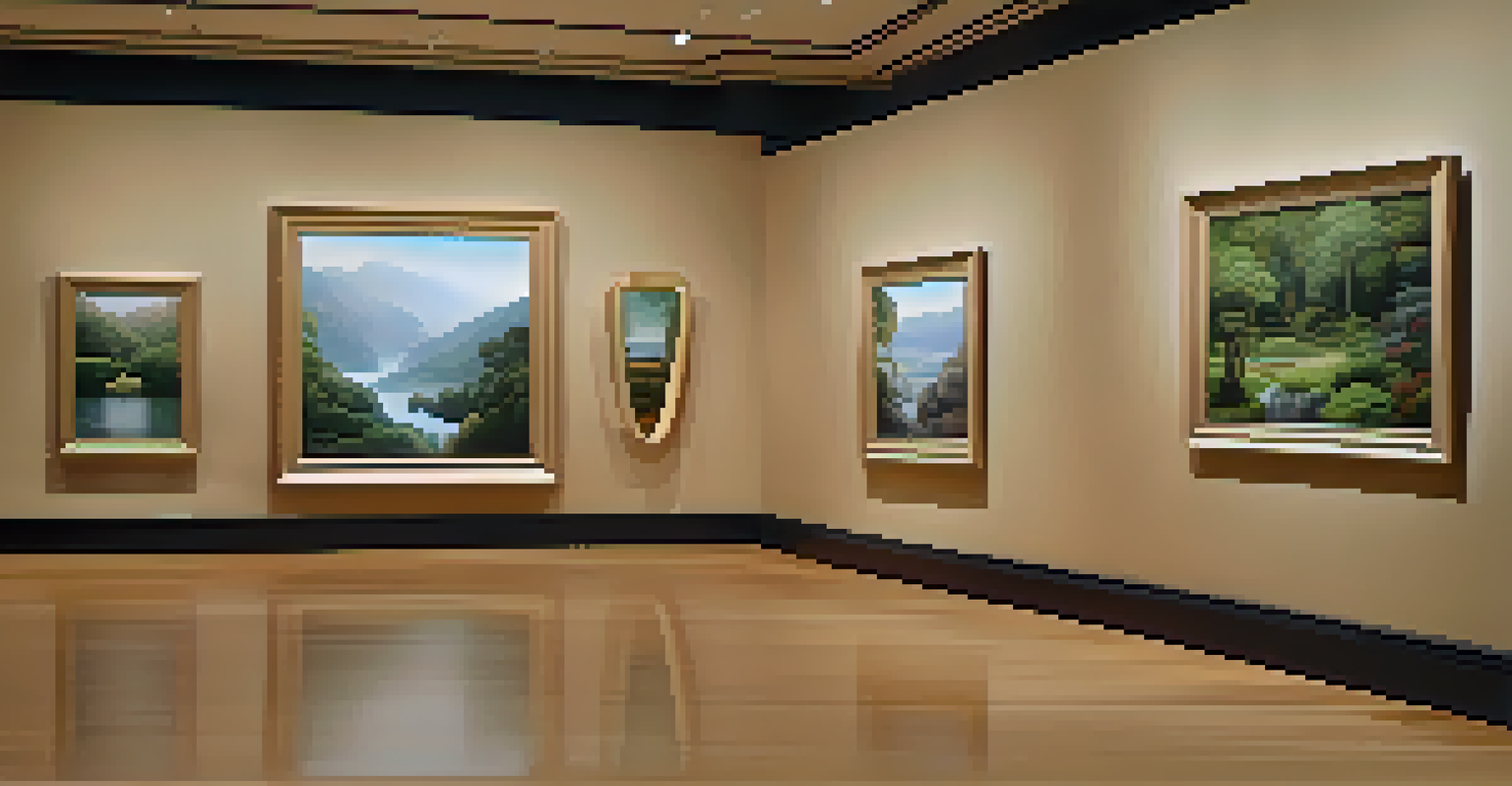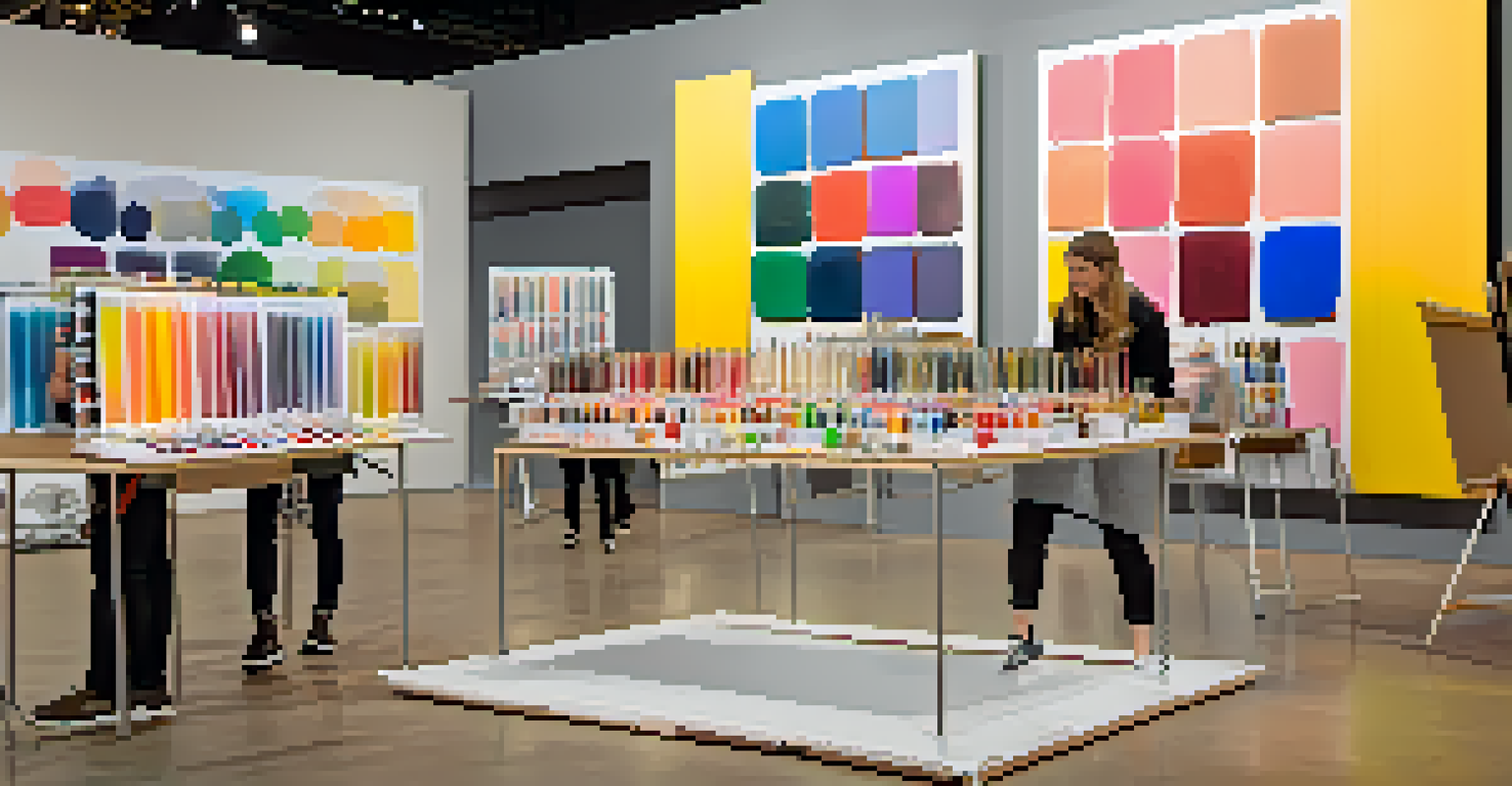Key Factors to Consider When Curating Art Exhibitions

Understanding Your Audience is Crucial for Success
Before you start curating an art exhibition, it's vital to know your audience. Are they art enthusiasts, casual visitors, or professionals? Understanding their interests and preferences can help you select artworks that resonate and engage them.
Art is not what you see, but what you make others see.
For instance, a contemporary art exhibition might appeal more to younger audiences, while historical pieces may attract older visitors. Tailoring your selection not only enhances the visitor experience but also boosts attendance and engagement.
By conducting surveys or analyzing previous exhibitions, you can gather insights that guide your curation process. This foundation will help ensure that your exhibition is not just a collection of art, but a meaningful experience for those who attend.
Choosing a Compelling Theme to Tie Everything Together
Every successful exhibition begins with a strong theme. A well-defined theme acts as the backbone of your exhibition, guiding the selection of artworks and providing a narrative for visitors to follow.

For example, an exhibition themed around 'Nature's Influence on Art' could feature works that depict landscapes, flora, or fauna, creating a cohesive story. This thematic approach not only captivates the audience but also encourages deeper contemplation of the art presented.
Know Your Audience
Understanding your audience's interests and preferences is essential for curating an engaging art exhibition.
Moreover, a compelling theme can enhance marketing efforts, making it easier to communicate the exhibition's essence to potential visitors. It creates a buzz and piques interest, encouraging people to mark their calendars.
Selecting Artworks that Enhance the Narrative
Once you have a theme, the next step is selecting artworks that support and enhance that narrative. Each piece should contribute to the overall story you want to tell, creating a harmonious experience for the audience.
The best way to predict the future is to create it.
Consider the emotional and visual impact of each artwork. For instance, if your theme revolves around 'Urban Life,' a mix of sculptures, paintings, and photographs that reflect cityscapes will provide diverse perspectives, enriching the narrative.
It's also crucial to think about the placement of each artwork. Strategic positioning can create dialogues between pieces, encouraging visitors to make connections and prompting further reflection on the theme.
Creating an Inviting and Accessible Exhibition Space
The physical space of your exhibition plays a significant role in visitor experience. An inviting environment encourages exploration and interaction, making it essential to consider layout, lighting, and accessibility.
Think about how visitors will navigate through the space. A logical flow allows them to immerse themselves in the narrative without feeling lost or overwhelmed. For instance, using clear signage and pathways can guide visitors seamlessly from one section to another.
Choose a Strong Theme
A compelling theme acts as the backbone of the exhibition, guiding the selection of artworks and enhancing the visitor experience.
Additionally, ensure that your exhibition is accessible to everyone, including people with disabilities. This inclusivity not only broadens your audience but also reflects the values of openness and community that art embodies.
Incorporating Interactive Elements for Engagement
To make your exhibition more engaging, consider incorporating interactive elements. These features invite visitors to participate actively rather than passively observing, creating memorable experiences.
For example, interactive stations where visitors can create their own art or digital displays that allow for commentary on pieces can enhance engagement. This hands-on approach transforms the exhibition from a visual experience into an interactive journey.
Such inclusivity fosters a deeper connection to the art, as visitors are not merely observers but participants in the creative dialogue. This engagement can lead to more meaningful interactions and conversations around the exhibited works.
Effective Marketing Strategies to Attract Visitors
No exhibition can succeed without effective marketing. It's essential to create a buzz around your event, ensuring that your target audience knows about it and feels excited to attend.
Utilizing social media platforms is an excellent way to reach a broader audience. Share sneak peeks of the artworks, behind-the-scenes footage, or artist interviews to build anticipation and encourage sharing among followers.
Engage Visitors Actively
Incorporating interactive elements transforms the exhibition into an immersive experience, fostering deeper connections with the art.
Additionally, consider partnerships with local businesses or community organizations to promote your exhibition. Collaborative efforts can help you tap into new audiences and generate increased interest in your event.
Evaluating Success and Gathering Feedback Post-Event
After the exhibition concludes, it's crucial to evaluate its success and gather feedback. This reflection will provide valuable insights for future exhibitions and help you understand what worked well and what could be improved.
Consider using surveys or feedback forms to collect visitor opinions. Questions about their favorite pieces, overall experience, and suggestions for future events can guide your curation process.

Analyzing attendance numbers and engagement levels can also reveal trends and preferences. This information will not only enhance future exhibitions but also show your commitment to continuous improvement and audience satisfaction.